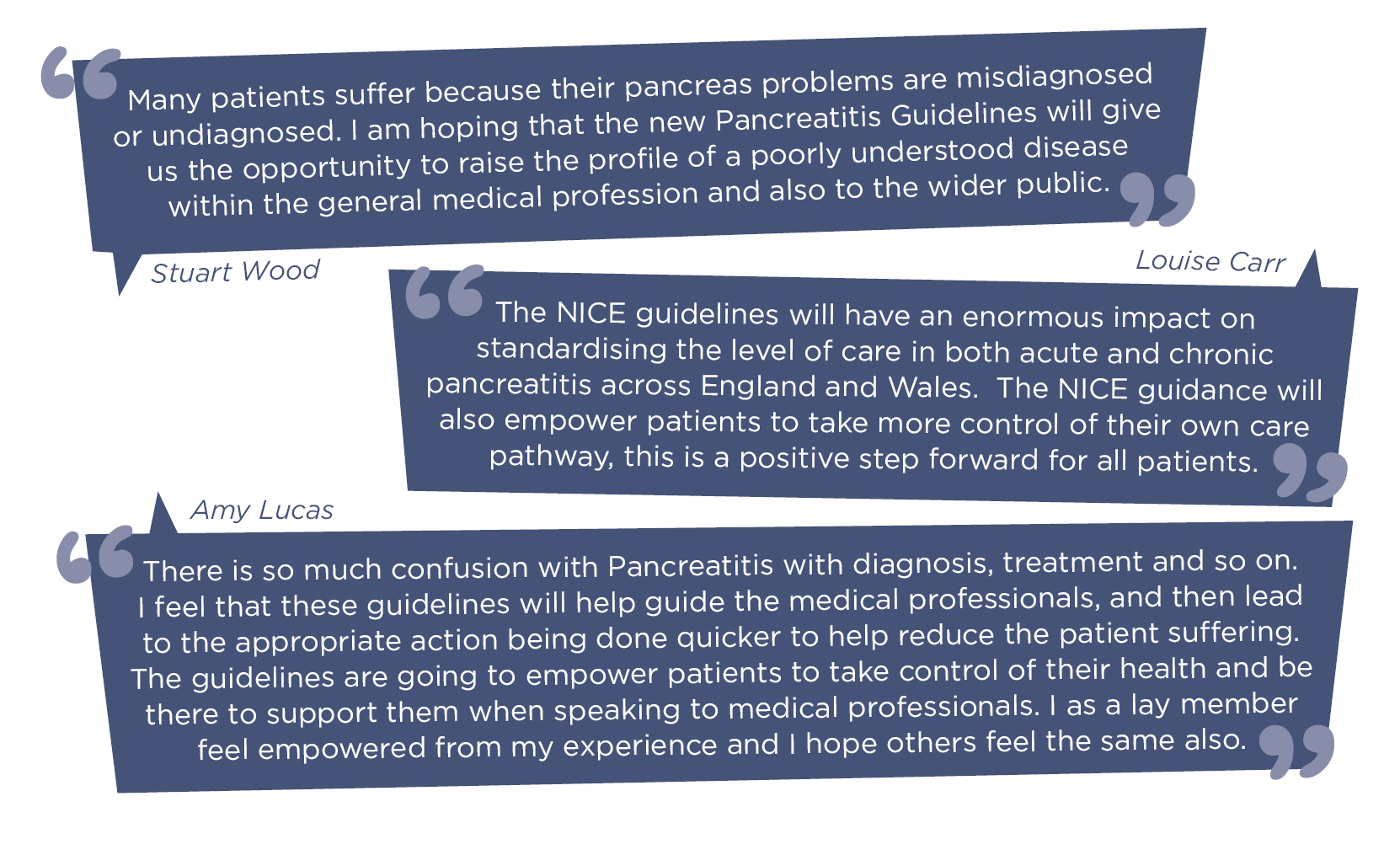NICE Guidelines on Pancreatitis
Pancreatitis is a serious and complex condition. It causes immense suffering, can have a severe effect on quality of life and may result in reduced life expectancy. In the past, there has been lack of knowledge on how to manage pancreatitis and this has resulted in clinicians avoiding those with the disease and conflicting advice being offered. With this guideline it is hoped that sound advice is provided to enable people with pancreatitis to receive appropriate care to improve the outcomes from this difficult condition.
Pancreatitis Guideline September 2018, National Institute for Health and Care Excellence
The NICE guidelines on pancreatitis were published on September 5th 2018 and the quote above is from the guideline’s introduction. The guidelines were two years in the making and brought together an array of specialists on pancreatitis, including patient and carer representatives. These lay members of the committee must be praised for the excellent job they have done in representing the views of patients and carers. You can really hear the patient voice (and hard-earned expertise) in the guidelines, which are stronger for their input. Here’s what Amy Lucas, Louise Carr and Stuart Wood have to say about the new guidelines when they were launched:

What do the NICE guidelines cover?
The guideline covers the management of both acute and chronic pancreatitis in children, young people and adults. It aims to improve quality of life by ensuring that people have the right treatment and follow-up, and get timely information and support after diagnosis. The guidelines also have a section of information for the public that explain what carer patients should expect.
The reality is that an attack of pancreatitis can come out of nowhere and is painful and frightening. It is difficult to diagnose and Guts UK hear many stories of the swift damage an attack can do. But these guidelines go a long way to showing patients what should happen with regards to diagnosis and treatment and are a step in the right direction.
How can I use the NICE guidelines as a patient?
NICE guidelines are recommendations for the care of individuals with specific clinical conditions or in specific circumstances within the NHS. Patients can use these guidelines to:
- Receive care that is based on the best available clinical evidence.
- Be accountable for their care, and know they will be cared for in a consitently evidence-based way.
- Improve their own health and prevent disease.
How can you get involved?
Guts UK hold their Kranky Panky Pancreatitis Awareness Campaign each November to raise awareness of pancreatitis and funds for crucial research. We hope that the NICE guidelines for pancreatitis will improve the diagnosis and care of pancreatitis. We also hope that a treatment will be developed soon and we’re proud to be the only UK charity funding a research fellowship into pancreatitis, but we wish we could do so much more. Get involved with our campaign and help us drive change for this difficult condition.
If you are involved with an organisation also consider helping NICE put the guidelines into practice. NICE has a factsheet for patient, service user, community and carer organisations that want to support the uptake of a NICE guideline. It contains information about publishing and promoting the guideline and includes suggestions of how you could contribute to this work.
Click here to read the NICE guidelines for pancreatitis